Pentax Optio M40 Review
Pentax Optio M40
Pentax has upgraded its slimmest pocket compact, but has it improved it?
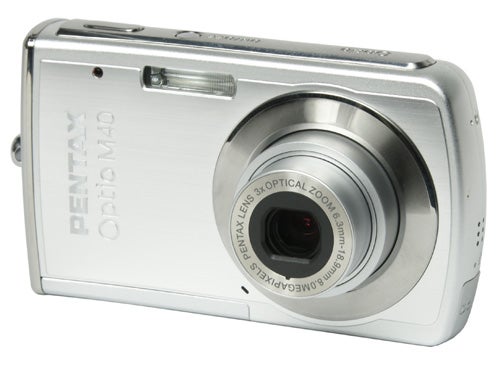
Verdict
Key Specifications
- Review Price: £129.00
Sometimes, when a new camera is launched onto the market, it is the result of a long period of research and product development, with teams of talented designers and engineers working with the latest exciting technologies, combining to produce a new camera that will astound and delight potential new owners. Other times though, they just slap a new sensor into last year’s model and call it the Pentax Optio M40.

OK, that was a bit harsh and I apologise unreservedly, after all Pentax did all the R&D stuff when it launched the Optio M30 7-megapixel ultra-compact in January this year, and launching an 8-megapixel version six months later is really just a way of recouping the cost of that investment, but the fact remains that the Optio M40 is virtually identical to the M30 in every respect other than sensor resolution. It is also competing with virtually the same cameras at the same price point. The M40 is available for around £130, while the M30 has dropped in price to around £100. I wonder if I could get away with copying my review of the M30 and just updating the features table? No, I thought not.
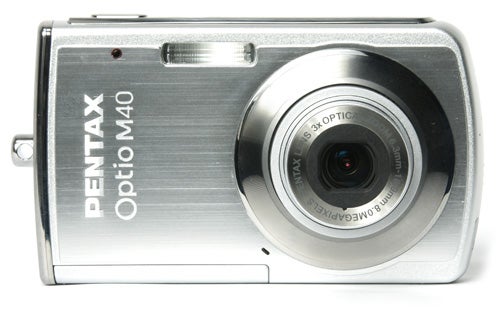
I might as well have done though, because there’s very little to say about the M40 that I haven’t already said about the previous model. It has exactly the same aluminium body, with only a slight tweak to the finish of the front panel to distinguish between the two models. It has exactly the same control layout, and the same 6.3mm-18.9mm f/3.1-5.9 3x zoom flush-folding lens. The LCD monitor is still 2.5 inches, but is slightly upgraded to 150k pixels from 115k, although that is still relatively low resolution by recent standards. I was fairly complimentary about the M30’s design, build quality and handling, and that opinion hasn’t changed. The flared shape makes it easy to hold, and the control interface is nice and simple. The M40 is also 18mm thick and weighing 115g is actually 5g lighter than the M30, making it one of the slimmest and lightest cameras on the market. You can slip it into a shirt pocket and hardly know you’re carrying it.
In terms of features there isn’t a lot to talk about either. The M40 is a very simple camera designed for point-and-shoot snapshots, so you wouldn’t expect it to be overloaded with complicated stuff. It has a standard Pentax compact camera menu that has barely changed in the past four or five years, but at least it does offer wide area, spot or tracking AF, ISO settings from 50-3200, and adjustable contrast, saturation and sharpness. The portrait mode does have face detection technology, however the menu offers none of the common light metering options such as centre-weighted or spot metering, relying on only TTL multi-segment metering and exposure compensation to get you through any difficult exposures. It does have a wider than average range of focusing options, including macro, super-macro, infinity, pan-focus and even manual focusing. Unsurprisingly it also lacks any sort of mechanical shake reduction, instead it has “Digital SR”, in other words it increases the ISO setting to produce a faster shutter speed, at the cost of increased image noise. The M40 has the same playback mode features as the M30, including cropping and resizing, rotation, digital filters, red-eye reduction and the ever-popular frame composite mode.
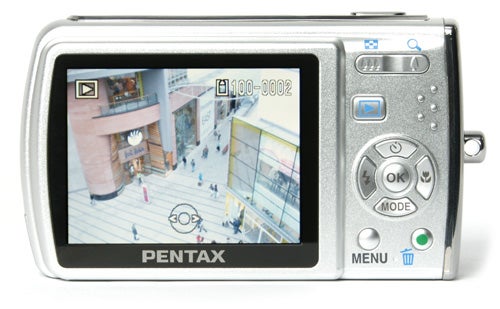
The built-in flash is also the same as the M30, and it’s a very good one, however I noticed that on the box, one of the selling points listed for the M40 is a massive 15.5 metre flash range, which would be comparable with the most powerful professional flashguns designed for SLRs. I’m afraid this is a bit of a cheat though. It is traditional to specify flash ranges at fixed ISO settings, usually 100 ISO. Under these conditions most compact cameras have a flash range of around four metres at wide angle, which is perfectly adequate for most social photography. The M40’s flash only has that huge range at the maximum sensitivity setting of 3200 ISO in Digital SR mode, and with the best will in the world, picture quality at that setting is pretty terrible. In normal Auto ISO mode the camera selects 800 ISO for flash shots, giving a range of eight metres, but still rather poor image quality. At the more normal 100 ISO the flash range is actually about five metres which is still fairly respectable, and the frame coverage is excellent, so why try to bolster this performance with spurious claims?
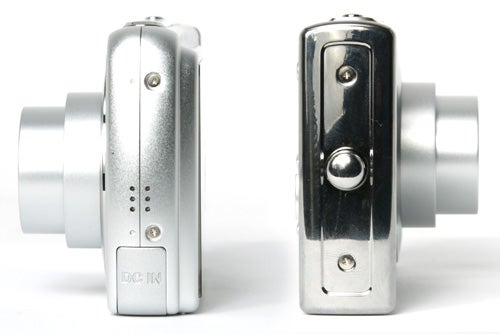
Another feature that is unchanged from the M30 is the autofocus system, and reading my review of it now it strikes me that I sounded perhaps a bit harsh. Although it is slow, it will focus in quite dim light, having no trouble in a large room lit with a 60W bulb, and only a little trouble with just a reading lamp. However it still has no AF assist lamp, so it can’t focus in the dark, possibly something of a handicap in a camera designed for social photography.
Not surprisingly, the M40’s overall performance is identical to the M30. It starts up in just over two and a half seconds and shuts down in just under two, and in single-shot mode it has an average shot-to-shot cycle time of just over three seconds. In continuous mode it averages 1.5 seconds per shot, although in both tests I was using a high-speed SanDisk SD card. The video mode is also unchanged, offering VGA resolution at 30fps with mono sound. The camera is of course powered by the same 740mAh Li-ion rechargeable as the M30, and the battery duration is the same at 230 shots. As usual I tested this and found it to be fairly accurate.
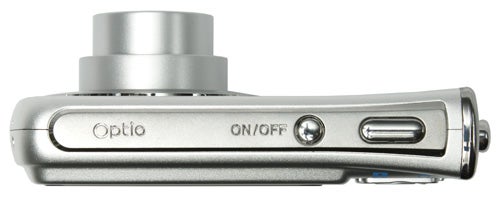
Of course the whole point of upgrading the sensor is to produce better image quality, and here the M40 succeeds, although only just. There is a small but noticeable improvement in overall detail, but some of that comes from the apparently much lower file compression at the highest quality setting. While the M30 produced image files of about 2.5MB, similar shots taken on the M40 are over 3MB, a greater difference than I’d expect between a 7MP and an 8MP sensor. Dynamic range and colour reproduction are about average for this class of camera. Unfortunately the lens is still the same, and produces significant barrel distortion at wide angle, pincushion distortion at telephoto and poor corner sharpness. Noise control is as good as ever though, with acceptable image quality at 400 ISO and usable results at 800. Even at the highest setting of 3200 ISO I have seen worse performance from more expensive cameras.
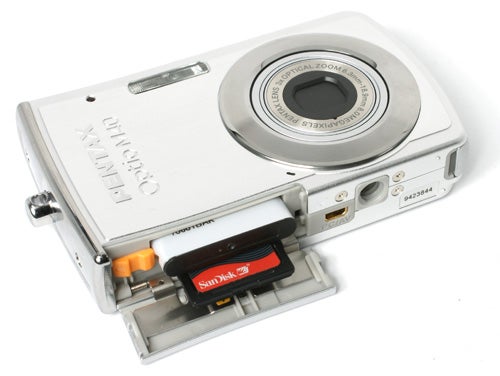
”’Verdict”’
The Optio M40 is only a marginal improvement over the M30, but it is not a bad little camera. It is well made, has good handling for an ultra-compact, and is extremely easy to use. It performs fairly well, and apart from the lens distortion the image quality is pretty good, especially its noise control at higher ISO settings. As before though, weak points are poor low light ability and lens distortion, but for the price it is certainly worth considering.
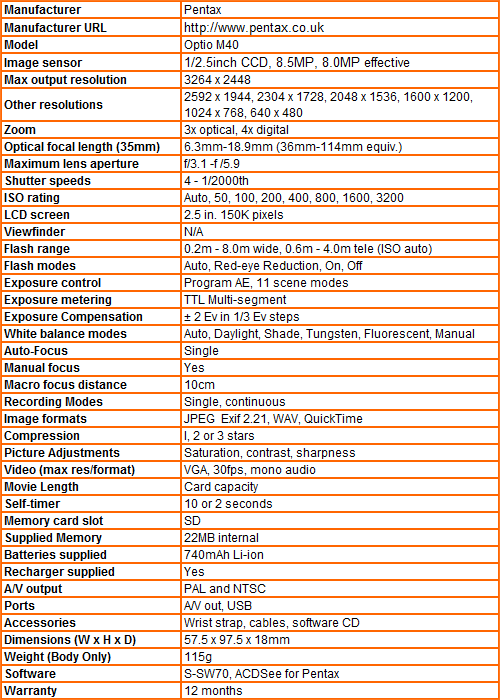
”Over the next few pages we show a range of test shots. On this page the full size image at the minimum and maximum ISO settings have been reduced to let you see the full image, and a series of full resolution crops have taken from original images at a range of ISO settings to show the overall image quality.”
—-

—-

Image quality at the minimum 50 ISO is very good, with no noise and plenty of fine detail.
—-

Image quality is still good at 100 ISO, although there is a tiny amount of colour speckling in the darker areas.
—-

Still no major problems at 200 ISO.
—-

Noise is starting to reduce image quality at 400 ISO but the level of fine detail is still good.
—-

Even at 800 ISO this would look OK in a small print.
—-

The M40’s maximum 3200 ISO is higher than average, but image quality at this setting is low.
—-

The image is quite noisy at 1600 ISO, but I’ve seen lots worse.
—-

This is the full-frame image at 3200 ISO.
—-
”A range of general test shots are shown over the next two pages. In some cases, the full size image has been reduced for bandwidth purposes, and a crop taken from the original full resolution image has been placed below it to show the overall image quality. Some other pictures may be clicked to view the original full-size image.”
—-
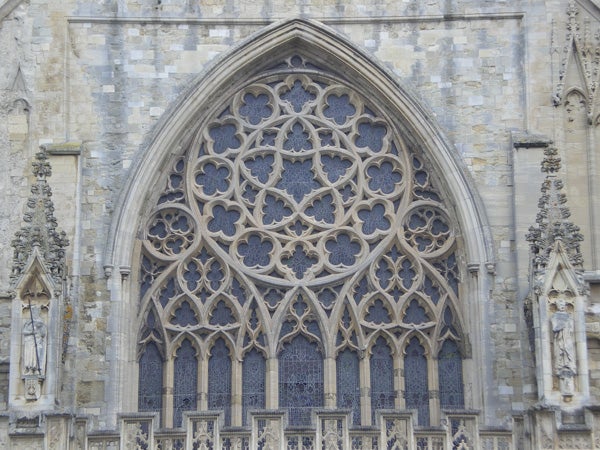
Here’s my usual detail test shot of the West Window of Exeter Cathedral, for you to compare with other cameras. See below for a full res crop, or click to see the whole picture.
—-
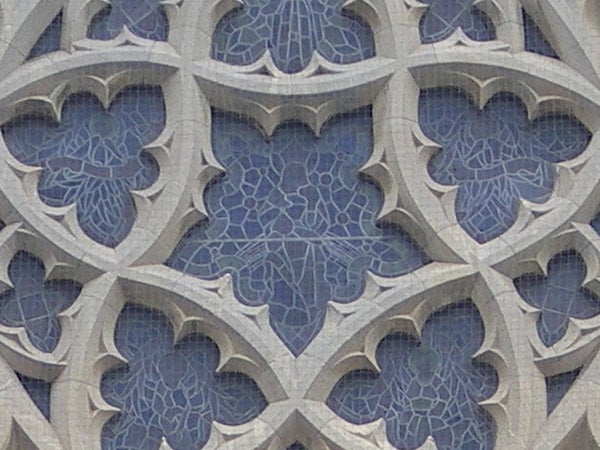
The level of detail is about average for an 8MP camera, but contrast and sharpness could be better. The dull day didn’t help though.
—-
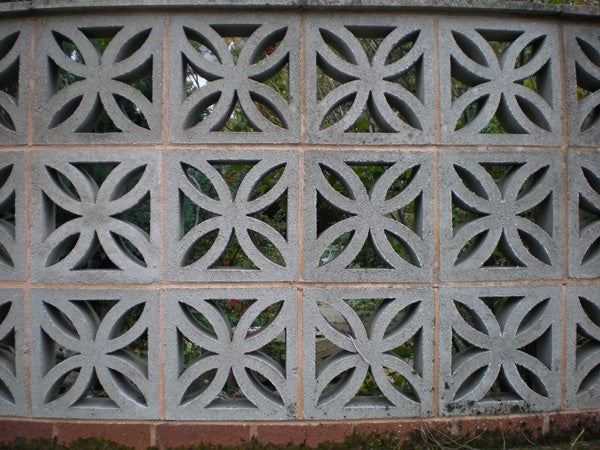
As with the M30, the lens produces a lot of barrel distortion at the wide angle end, as well as pincushion distortion at the telephoto end.
—-
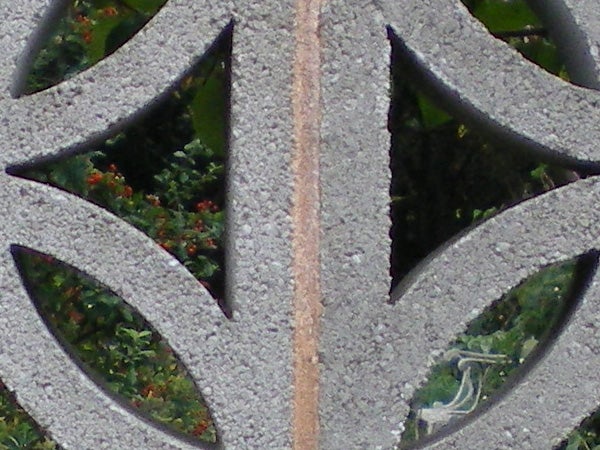
Centre sharpness isn’t too bad, but I’ve seen better.
—-
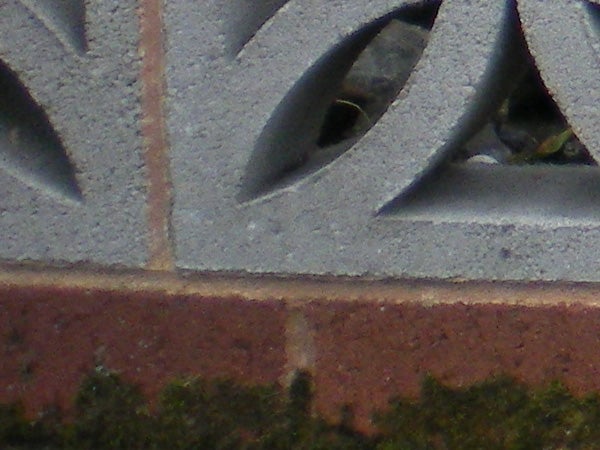
Corner sharpness is also rather poor.
—-
”A range of general test shots are shown over the next two pages. In some cases, the full size image has been reduced for bandwidth purposes, and a crop taken from the original full resolution image has been placed below it to show the overall image quality. Some other pictures may be clicked to view the original full-size image.”
—-

The wide angle end of the zoom is equivalent to 36mm, which is wider than average for a compact, but the lens distortion is a problem.
—-

The pincushion distortion at the telephoto end is visible in this shot, pinching in towards the middle of the frame.
—-
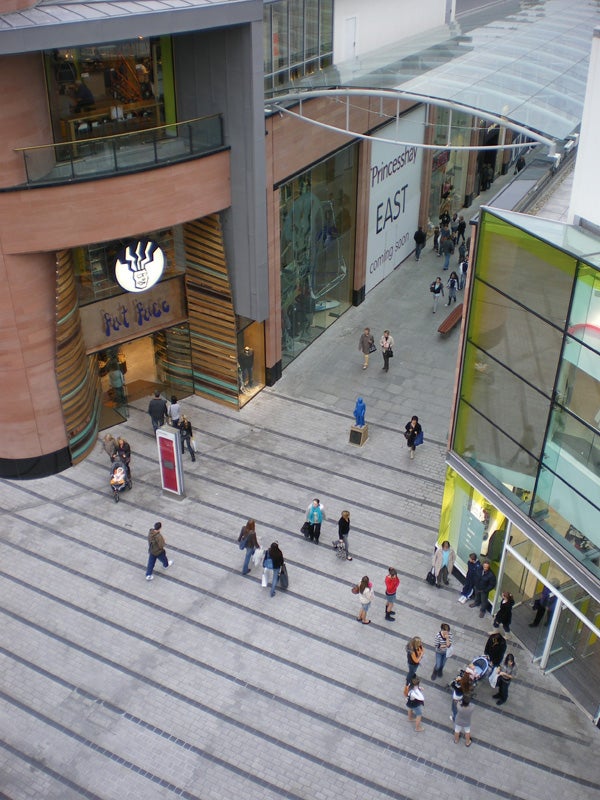
Exposure and colour rendition are good despite the overcast weather.
—-
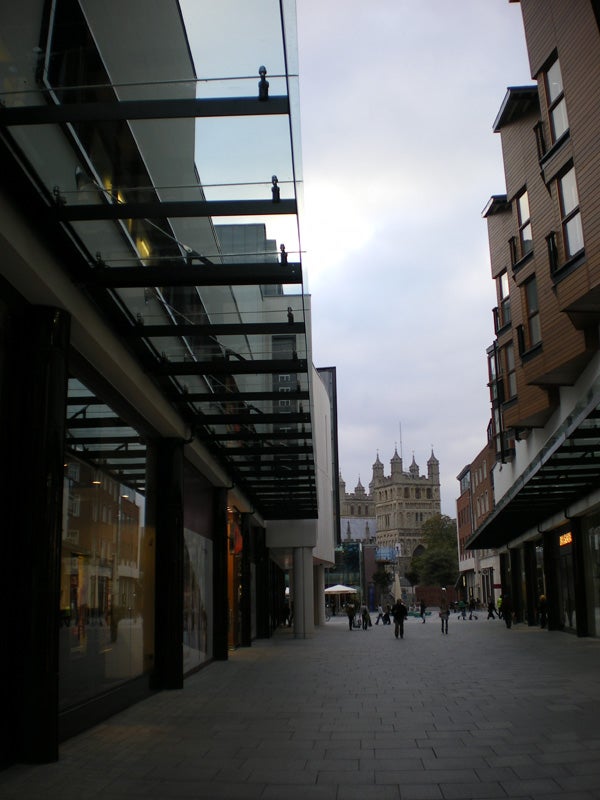
This is about as much contrast as I could find. The shadow details are little murky.
—-
Trusted Score
Score in detail
-
Value 8
-
Image Quality 7
Features
| Camera type | Ultra Compact |
| Megapixels (Megapixel) | 8 Megapixel |
| Optical Zoom (Times) | 3x |
| Image Sensor | CCD |
| Image Stabilisation | Electronic |
| LCD Monitor | 2.5 in |
| Flash modes | Auto Flash, Red-eye Reduction, Flash ON, Flash OFF |
| Video (max res/format) | 640 x 480 |
| Memory card slot | Secure Digital (SD) Card |

